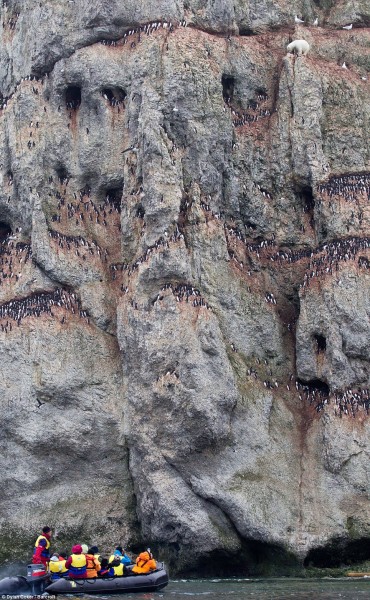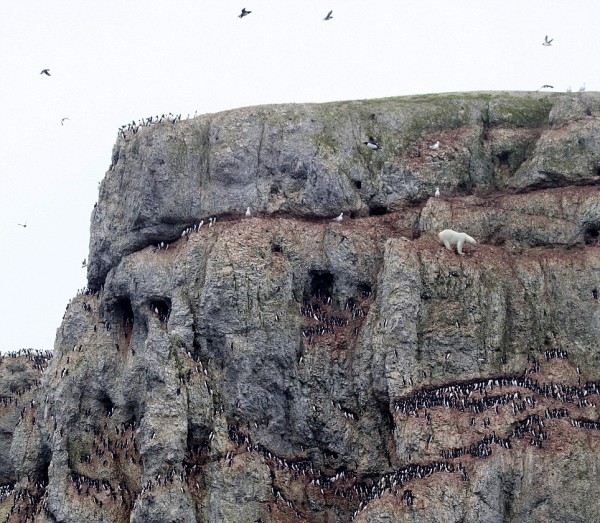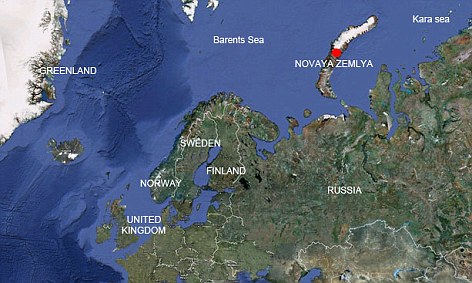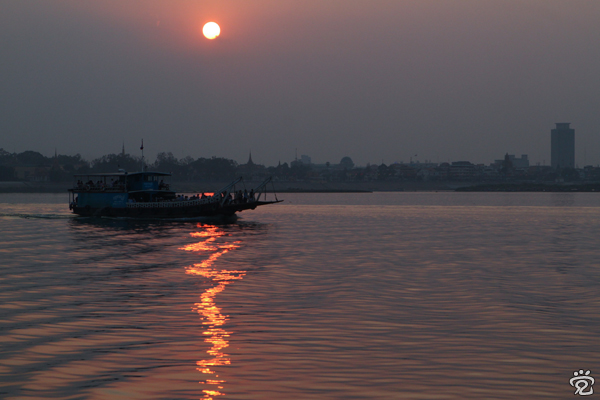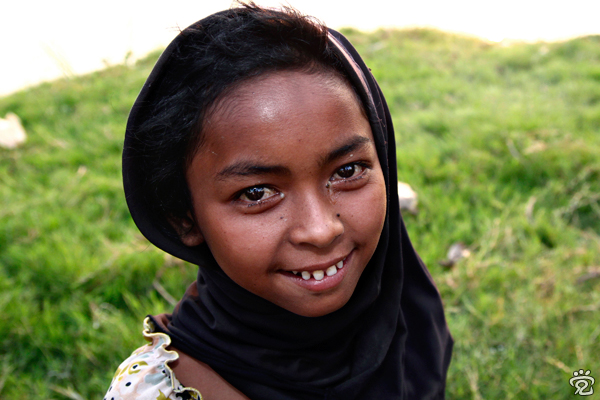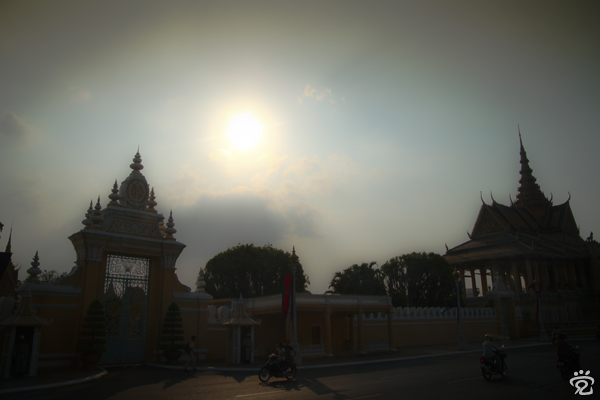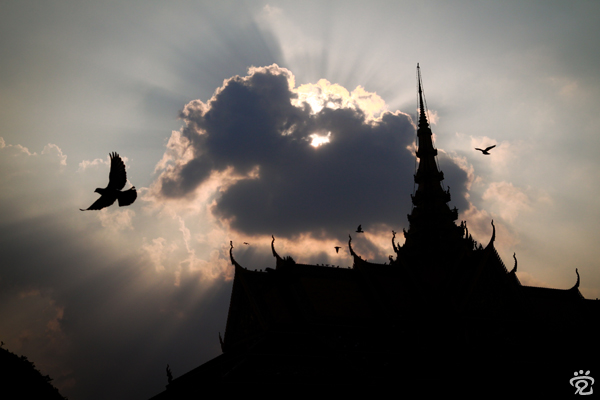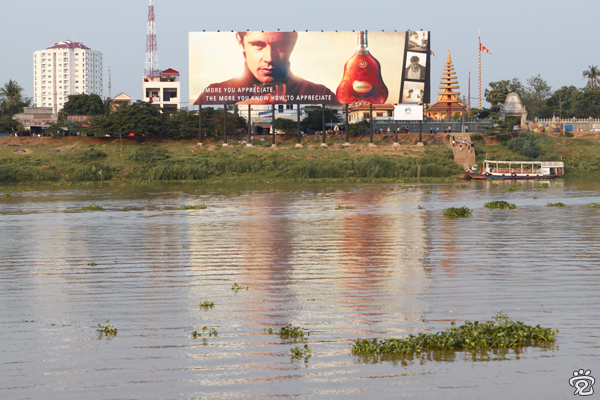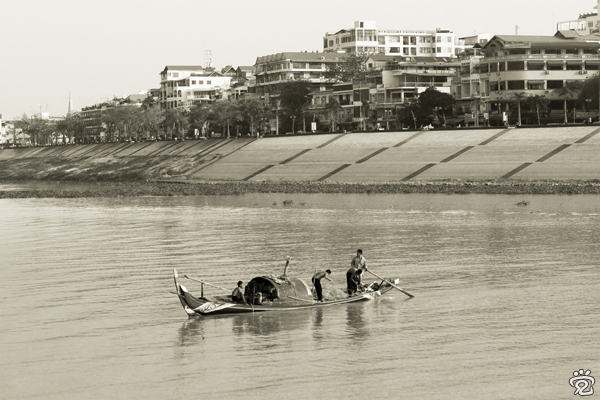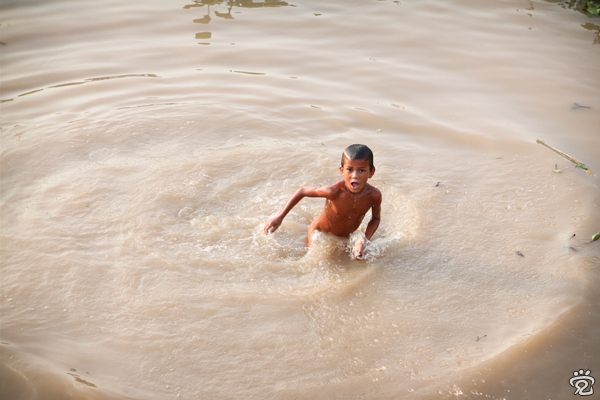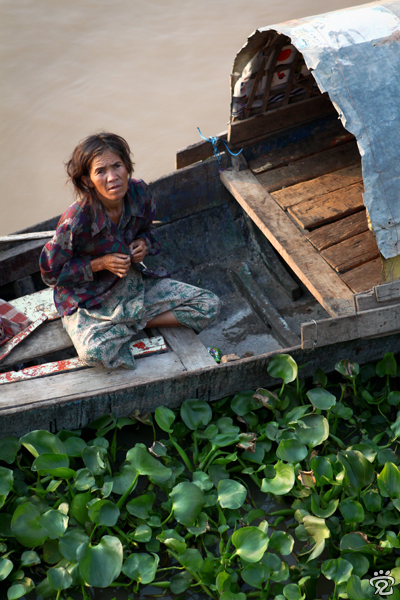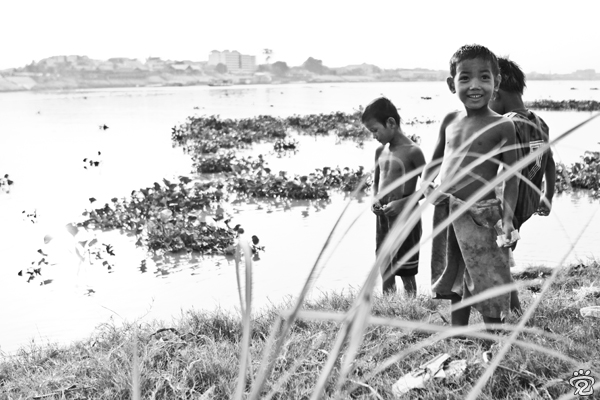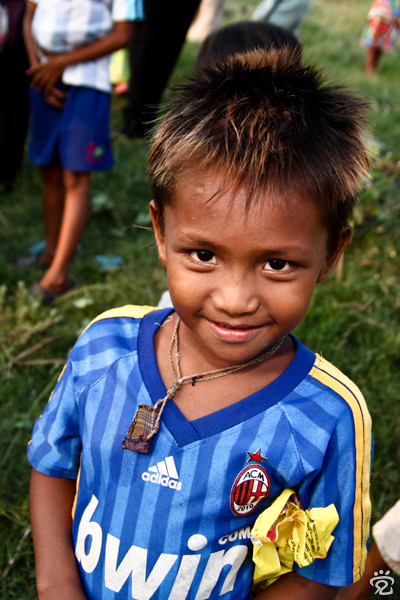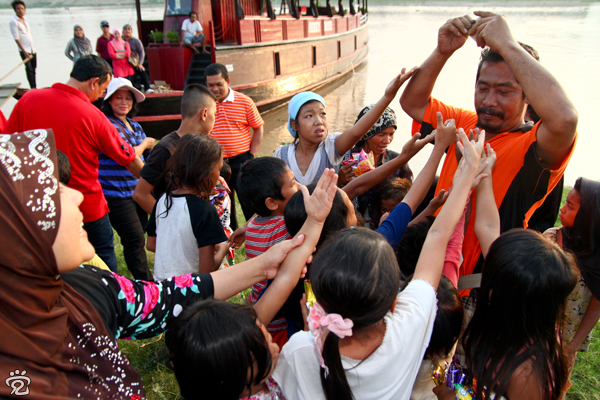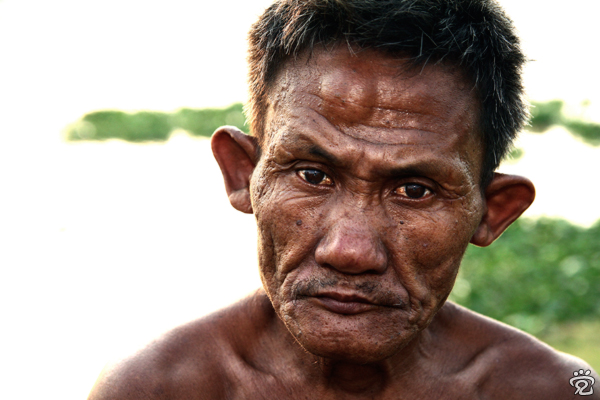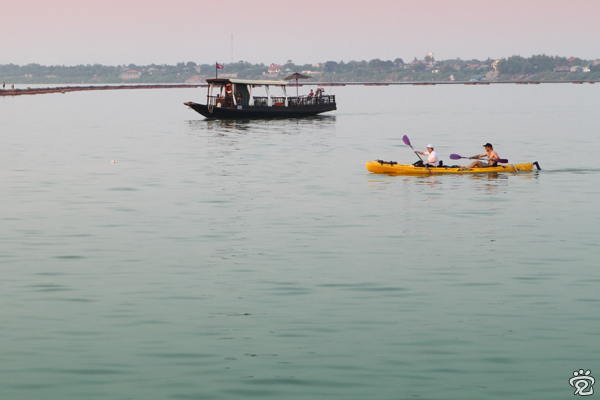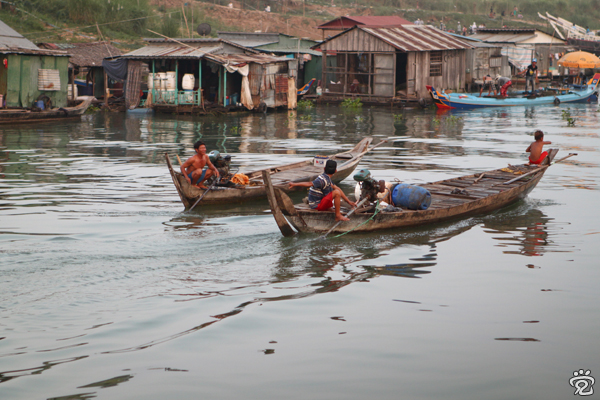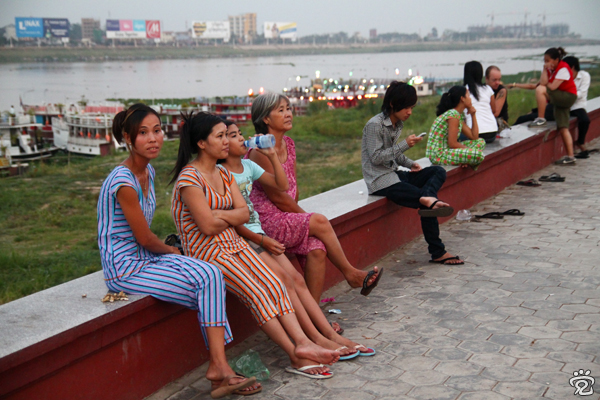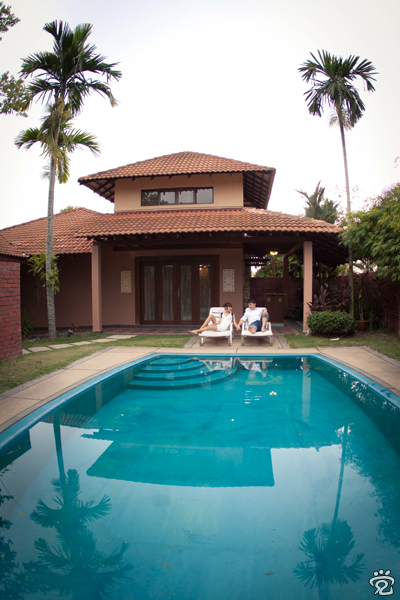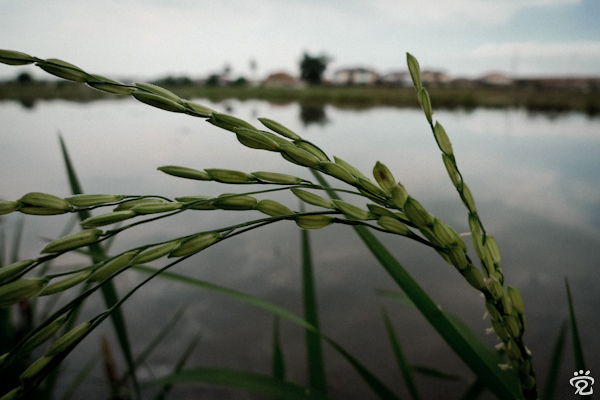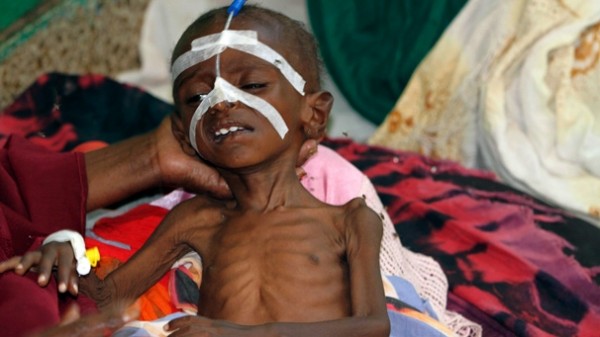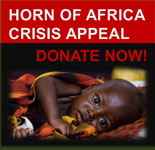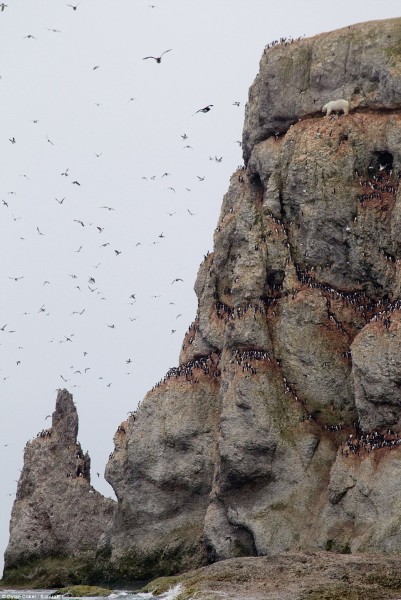
Watch the birdie: A hungry polar bear inching down a 300ft cliff face in a desperate search for food on in Novaya Zemlya, Russia
- Previously undocumented scene stunned tourists as they watched bear scramble and slip down Russian precipice
- It is believed hungry bears are being attracted to more dangerous terrain because usual icy hunting spots are melting
For birds nesting on a precarious cliff, the last visitor they might expect to see would be a hulking polar bear clambering down to join them.
Yet this bulky beast somehow managed to descend a craggy precipice in Russia’s remote Arctic archipelago of Novaya Zemlya.
The young male risked life and limb scavenging for eggs along the 300ft-high rock face thronged with hundreds of squawking Brunnich’s Guillemots.
Stunned tourists onboard a chartered ice-breaker boat were left in awe as the watched the previously undocumented spectacle.
American photographer Dylan Coker, who captured the incredible scene, said: ‘The height that the bear was at and the sheerness of the cliff face were absolutely amazing,’ said the 40-year-old.
‘Everyone was terrified it was going to fall.
‘Every so often there would be a gasp from someone on the boat when the bear slipped.
‘It was slipping quite a bit and one point it was stretched right out to reach for eggs in a nest.’
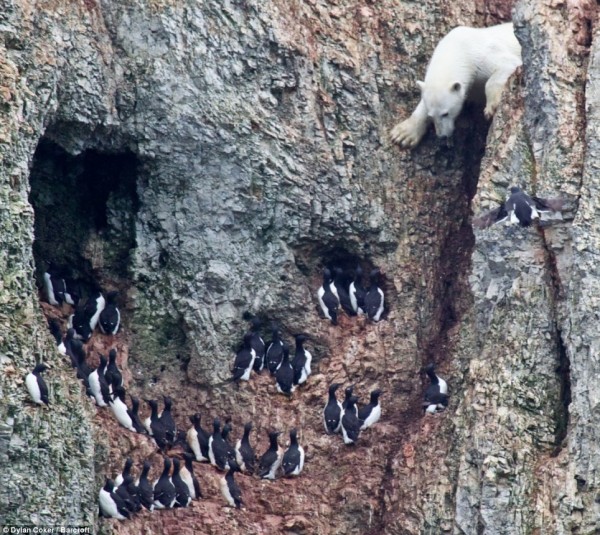
What are you doing here?! The bear approches nesting Brunnich's Guillemots, whose eggs he hoped to scavange
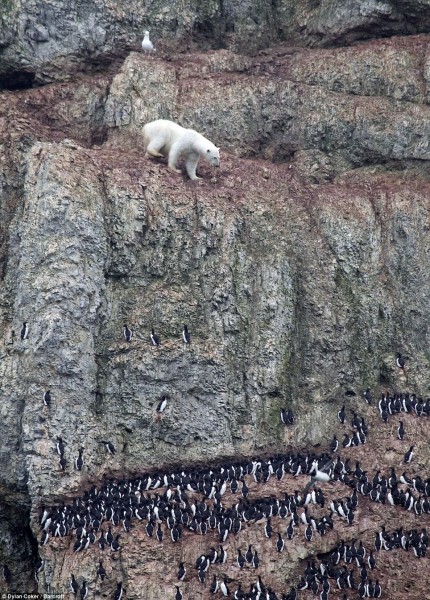
Gone again: The birds raced down the cliff every time the polar bear ventured further down. A quizzical seagull watches from above the bulky beast
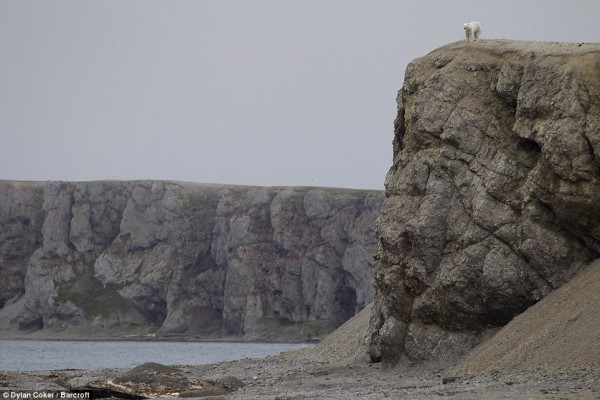
Remote: The polar bear before making his daring descent on one of the rocky Ostrova Oranskie islands
Describing the moment the passengers relealised they were seeing a bear on the cliff on one of the Ostrova Oranskie islands, Californian Mr Coker, who now lives in Australia, said: ‘It was a really beautiful place; very foggy, cool, and serene with a sky full of squawking birds.
‘We rounded a corner and suddenly we could see this white blob at the top of some cliffs.
‘The cliffs were at least as high as a five-storey building. At first we thought it might be a large bird or a snow patch but as we got nearer we realised it was a polar bear.
‘Everyone on the boat was quiet, we just sat there in awe.’
Despite its bravado, the bear returned to the top of the cliff without enjoying a full meal after losing its footing several times.
Previously the group of group had encountered polar bears hunting on ice floes in Bukhta Maka, after journeying for two days without seeing land.
But it is believed that a scarcity of ice has led to bears seeking out food in more dangerous locations.
Mr Coker said: ‘There’s a real problem with the ice disappearing due to climate change.
‘Traditionally the bears sit by an air hole in the ice waiting for a seal to poke its head out so they can grab it.
‘But because there’s less and less ice, the bears are looking for alternative sources of food and have discovered the birds’ eggs.’
During the expedition the tourists also witnessed bears swimming hundreds of miles out to sea.
Mr Coker added: ‘They’re used to resting on and hunting from ice floes but now the bears swim around until they are exhausted, then they drown.’
This was the first time a civilian boat has been granted permission to sail in these waters, which also forms part of a large military zone.
Mountainous and shrouded in mystery, the Novaya Zemlya archipelago stretches 1000 km in an elongated crescent between the Barents and Kara seas.
Today it remains one of Russia’s most restricted and isolated regions.
Aurora Expeditions secured the first permit on condition that two government representatives act as chaperones.
Mr Coker, who recently won an Archbishops Award for his photography, added: ‘We were really lucky to have witnessed it.
‘We could have easily been there on a different day and who knows how often this kind of thing occurs.
‘I will never forget the day I watched a polar bear hunt for eggs on a cliff-edge.
‘I couldn’t have imagined a better or more unique adventure.’
[source: http://www.dailymail.co.uk/news/article-2031711/The-bear-dared-Awesome-polar-animal-scales-300ft-cliff-bid-picnic-VERY-surprised-birds.html]
